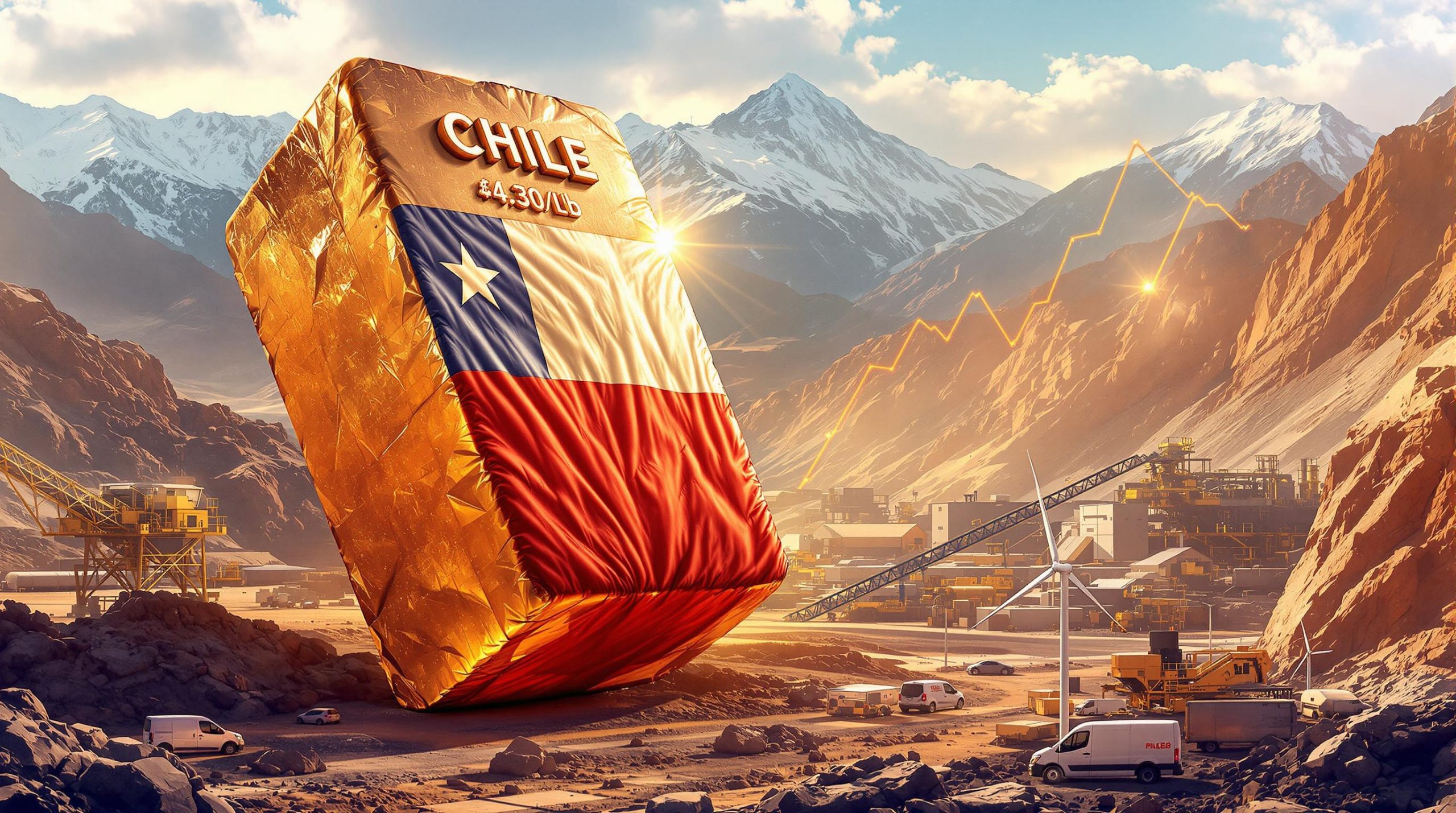## How Does Gold Exploration Begin?
Exploration and mining in goldrich zones is at the heart of the search for economic deposits. This process combines scientific methods, historical research, and strategic planning. Furthermore, explorers utilise various techniques to unravel the subsurface potential. In addition, exploration and mining in goldrich zones drives the modern geological approach.
Geologists first develop robust conceptual models to guide fieldwork. These models incorporate principles of rock formation and mineralisation. In addition, historical data is integrated to better understand past successes. Moreover, these techniques ensure that potential targets are systematically evaluated.
### Conceptual Models as Exploration Foundations
The foundation of successful gold exploration relies on sound conceptual frameworks. Geologists build these models based on expected deposit types, including epithermal, orogenic, or Carlin-type systems. Consequently, such models allow teams to focus on areas with favourable geological indicators.
For instance, analyses of rock formations provide gold deposits analysis that corroborate these models. Additionally, historical records and academic research further enhance predictive accuracy.
Historical data and previous mine workings reveal recurrent patterns. In addition, explorers identify common geochemical signatures. For example, alteration patterns and host rock types are crucial. Subsequently, these insights guide field surveys and validate exploration hypotheses.
Key factors for identifying mineralisation often include:
- Structural settings like faults and shear zones
- Alteration halos indicating silicification or sericitization
- Geochemical anomalies in pathfinder elements
- Recognised rock types hosting similar deposits
## Regional-Scale Assessment Techniques
After conceptual models are established, regional-scale assessments narrow down target areas. Geological mapping plays a pivotal role by documenting rock types, structural features, and alteration zones. In addition, remote sensing and satellite imagery offer broad overviews of potential targets.
Field geologists continue using historical mining data to identify overlooked opportunities. For instance, old mappings sometimes yield clues relevant to mineral exploration importance. Moreover, combining multiple data layers improves target precision.
Remote sensing methods include:
- Satellite imagery analysis for structural lineaments
- LiDAR surveys to detect subtle topographic features
- Hyperspectral imaging to identify specific minerals
Furthermore, target maps are created by overlaying geological and geophysical data. Consequently, these maps highlight areas where further investigation is warranted.
## Geochemical Survey Methodologies
Geochemical surveys provide direct evidence of mineral enrichment. Soil sampling, stream sediment analysis, and rock chip collection mark early exploration steps. Additionally, these techniques help validate targets identified using other methods.
Systematic grid sampling is often employed in areas with residual soils. In contrast, for transported soils, careful interpretation is required. For instance, stream sediments may reveal upstream sources with elevated gold values. Thus, combining different methods enhances overall assessment.
Explorers integrate insights from drilling results interpretation to refine their sampling strategy. Furthermore, analyzing pathfinder elements like arsenic or antimony provides useful clues. Consequently, a multi-element approach proves invaluable.
Key considerations in geochemical surveys include:
- Precise spacing of samples (25–200 metres)
- Systematic collection from altered zones
- Early identification of geochemical anomalies
These strategies significantly improve the success rate of mineral targeting. In addition, they reduce the uncertainty inherent in exploration.
## What Geophysical Methods Enhance Gold Exploration?
Geophysical methods offer a unique glimpse into subsurface structures. These techniques complement geological surveys and geochemical analyses. Furthermore, they enable a more detailed understanding of mineral prospectivity.
Modern imaging technologies such as magnetic surveys, radiometric techniques, and gravity surveys are commonly used. In addition, induced polarisation (IP) detects disseminated sulphides related to gold mineralisation. Consequently, integrating these methods into field studies enhances exploration quality.
Aircraft surveys deliver regional indicators, while ground-based instruments offer detailed follow-up. Moreover, advanced processing algorithms enable the transformation of data into clear, interpretable images. For example, integrating results into 3D geological modelling showcases the subsurface in impressive detail.
Multiple datasets are correlated to pinpoint prospective zones. As a result, uncertainties can be reduced significantly. Furthermore, correlating magnetic lows, high chargeability, and gravity lows presents a coherent picture of the subsurface.
### Advanced Imaging Technologies
Magnetic surveys reveal variations in the Earth's field. In addition, radiometric techniques focus on naturally occurring levels of potassium, thorium, and uranium. Consequently, these tools enhance exploration strategies and target evaluation.
For instance, data from weak gravity anomalies may indicate silicification zones. Moreover, magnetic mapping often reveals fault lines and intrusions aligned with expected gold zones. Ultimately, advanced imaging acts as a central component of modern exploration.
## How Are Gold Targets Tested and Evaluated?
After identifying potential targets, systematic testing and evaluation follow. Methods include surface evaluation, trenching, and extensive sampling. In addition, drilling strategies play a crucial role in verifying subsurface mineralisation.
Surface evaluation typically begins with trenching. In such cases, linear channels expose bedrock and allow geologists to verify geochemical anomalies. Furthermore, channel sampling and structural mapping provide a near real-time assessment.
For instance, sampling results are cross-referenced with drilling program types. Consequently, these methods ensure that only the most promising targets are advanced. Moreover, multiple sampling techniques enhance reliability.
Key surface assessment techniques include:
- Trenching for direct exposure
- Systematic channel sampling
- Detailed structural mapping
- Quality control through duplicate samples
Following surface evaluations, drilling confirms the presence of economic mineralisation. The next section addresses these drilling strategies further.
### Drilling Strategies for Gold Deposits
Diamond drilling and reverse circulation (RC) drilling are widely employed. Diamond drilling, though expensive, provides precise core samples. In addition, RC drilling is a cost-effective method suitable for initial tests. Consequently, both methods are integral to gold prospect evaluation.
Drilling results are pivotal in verifying geological models. Furthermore, core logging and sample integrity protocols ensure high-quality information is garnered. For example, drilling results interpretation aids in comparing subsurface data with surface surveys.
Routine quality checks, such as field duplicates and certified reference materials, support reliable data collection. Consequently, these measures maintain the accuracy of assessments in exploration and mining in goldrich zones.
### Resource Modelling Fundamentals
Resource modelling translates drilling data into manageable 3D frameworks. Here, structural frameworks, geological boundaries, and alteration zones are mapped out. In addition, geostatistical methods allow interpolation of gold grades. Consequently, these models underpin economic valuation.
Key resource modelling techniques include:
- Variography for spatial continuity
- Kriging for grade interpolation
- Conditional simulation to assess uncertainties
- Multiple indicator methods for complex deposits
Furthermore, combining core logging with 3D geological modelling provides comprehensive insights. Ultimately, these models drive decisions for further exploration and extraction.
## What Mining Methods Are Used for Gold Extraction?
Mining methods selection depends on deposit characteristics, economic factors, and environmental considerations. Consequently, appropriate techniques ranging from open pit to underground mining are employed. Furthermore, each method must maximise resource recovery while minimising costs and risks.
In many cases, open pit mining is favoured for near-surface deposits. For instance, specific deposit geometries and grade distributions inform the selection criteria. In addition, waste-to-ore ratios guide the economic feasibility of mining operations.
Open pit mining relies on advanced equipment and careful planning. Moreover, pit optimisation techniques ensure efficient resource extraction. Additionally, algorithms assist in defining ultimate pit limits, enhancing operational success.
In contrast, underground mining is selected when deposits extend below economic open pit depths. Furthermore, methods such as cut-and-fill, longhole stoping, and block caving are applied. Consequently, these techniques cater to different structural and grade requirements.
Key methods in underground mining include:
- Cut-and-fill mining for irregular deposits
- Longhole stoping for standard geometries
- Block caving for large, deep ore bodies
These approaches maintain profitability while reducing dilution. Furthermore, they enable selective extraction of high-grade ore. Ultimately, this reinforces the potential in exploration and mining in goldrich zones.
### Selective Mining for High-Grade Deposits
Selective mining is critical for deposits with high nugget effects. Moreover, techniques such as narrow vein mining are used. In addition, these strategies minimise dilution and optimise grade recovery. Consequently, careful geological mapping supports accurate ore boundary identification.
Detailed mapping, specialised drilling, and controlled blasting are important. Furthermore, geologists use real-time assays to adjust mining boundaries. These practices ensure that extraction remains efficient and profitable.
## How Is Gold Processed from Ore to Bullion?
Transforming ore into bullion involves several processing routes. Each method depends on ore characteristics and economic factors. Consequently, techniques such as gravity concentration, carbon-in-leach, and heap leaching are commonly applied. Furthermore, specialised pre-treatment methods are required for refractory ores.
Gravity concentration is effective for coarse, free-milling gold. In addition, equipment like centrifugal concentrators and shaking tables enhance recovery. Moreover, this method provides rapid early cash flow advantages.
Carbon-in-leach (CIL) processes dissolve gold in cyanide solutions. Additionally, activated carbon adsorbs the dissolved metal. Consequently, high recovery rates—typically **90-95%**—are achieved. Furthermore, heap leaching is deployed for low-grade deposits with lower processing costs.
Refractory ores demand additional pre-treatment. Pressure oxidation and roasting are examples where sulphide minerals must be broken down. Moreover, biological oxidation offers an environmentally friendly alternative. In addition, thiosulfate leaching is employed for challenging ores.
### Recovery and Refining Processes
The final stages of gold processing convert recovered metal into bullion. Electrowinning and smelting are commonly used to precipitate and refine gold. Furthermore, doré production creates intermediate bars requiring further refinement.
For example, electrowinning recovers gold via automated processes using electrical current. Moreover, smelting separates gold from impurities in high-temperature furnaces. These methods ensure the final product meets quality standards with 99.99% purity.
Additionally, by-product recovery options often include silver, copper, and precious metals. In this context, external sources such as banded iron insights provide further exploration perspectives. Similarly, innovative projects report gold-rich zone discovery that enhance industry confidence.
## Conclusion
In summary, modern exploration and mining in goldrich zones integrate conceptual models, geochemical surveys, geophysical mapping, and strategic drilling. Furthermore, the process evolves from initial target mapping to refined resource modelling and extraction. Consequently, each step leverages advanced techniques and data integration.
Moreover, each phase—from open pit to underground mining—requires careful evaluation of economic and environmental factors. Thus, this comprehensive approach ensures sustainable practices and efficient extraction. Finally, exploration and mining in goldrich zones continues to offer significant opportunities for the future.
Want to Catch the Next Major Gold Discovery Before the Market?
Discovery Alert's proprietary Discovery IQ model provides real-time notifications when significant mineral discoveries are announced on the ASX, giving you a crucial edge in identifying investment opportunities before they become mainstream news. Explore how historic gold discoveries have generated substantial returns by visiting our dedicated discoveries page and start your 30-day free trial today.




